Other by Maria Olimpia Squillaci
This case study was completed in June 2019 as part of the Sustaining Minoritized Languages in Eur... more This case study was completed in June 2019 as part of the Sustaining Minoritized Languages in Europe (SMiLE) Collaborative Research Awards, a project of the Smithsonian Center for Folklife and Cultural Heritage’s Language Vitality Initiative.
Link to the collection of case studies: https://doi.org/10.25573/data.c.6280911
More information on the SMiLE project website: https://folklife.si.edu/smile
I have just completed the first draft of the manuscript and I'm looking for linguists -- with int... more I have just completed the first draft of the manuscript and I'm looking for linguists -- with interest in syntax, language contact, and Greek/Italo-Romance dialectology -- to read it (even just a chapter!), so to get some stimulating feedback on it. If you are interested, please email me at m.olimpia.squillaci@gmail.com
In this paper, I explore the close connection between language, culture and identity and their co... more In this paper, I explore the close connection between language, culture and identity and their combined manifestations in traditional crafts, (ex)urban landscape transformation, and local development activities in the Greko community of southern Italy. In particular, I focus on language abandonment and revitalization and examine how these processes affected and were affected by societal change. Through this, I demonstrate how the relation between Greko and the socioeconomic status of the area changed in the 20th century: while in the first half of the century the abandonment of Greko was the result of the difficult socioeconomic situation in southern Calabria, in the second half of the century the situation was reversed to the extent that language revitalization became the driving force for a number of socioeconomic changes.

Masters of Arts in Interdisciplinary research and studies on Eastern Europe – MIREES
The International Master in Interdisciplinary Research and Studies on Easter Europe (MIREES) was ... more The International Master in Interdisciplinary Research and Studies on Easter Europe (MIREES) was launched in 2004 at the School of Political Sciences-Forlì Campus in cooperation with Europe and the Balkans International Network (EBIN). In 2008 it developed as a second cycle degree program, which currently delivers a joint MA awarded by the four full partner Universities of Bologna, Vytautas Magnus at Kaunas, Corvinus of Budapest and St. Petersburg State University, together with the universities of Ljubljana and Zagreb. The program is carried out with the additional support of the associate partners, as the MIREES International Alumni Association (MAiA), the Institute of East-Central and Balkan Europe (IECOB) in Forlì, the NATO Centre of Excellence for Energy Security in Vilnius, and the Institute for Democracy 'Societas
Papers by Maria Olimpia Squillaci

TERRITORI SPEZZATI. SPOPOLAMENTO E ABBANDONO NELLE AREE INTERNE DELL'ITALIA CONTEMPORANEA, 2019
Il presente lavoro descrive l’evoluzione più recente dell’Area Grecanica calabrese, un territorio... more Il presente lavoro descrive l’evoluzione più recente dell’Area Grecanica calabrese, un territorio spezzato sotto numerosi aspetti: segnato dalle fiumare, caratterizzato da una conformazione che rende difficoltosa la comunicazione tra i centri, insieme dei diversi esiti di un processo di spopolamento iniziato nel XIX secolo. Attraverso la presentazione di aspetti geomorfologici, economici e culturali, si interpretano le somiglianze e le diversità di questi territori nel più ampio ambito delle aree interne. La lettura dei casi di Pentedattilo – comunità interna disgregata, che ha lasciato tracce architettoniche oggi sottoposte a un processo di ‘musealizzazione’ – e Bova – centro che origina un corrispondente costiero a seguito dell’emigrazione economica – ma anche delle peculiarità produttive (il bergamotto) e dell’elemento identitario della lingua grecanica, offre alcuni punti per una potenziale costruzione di un’identificazione come base per la trasformazione innovativa del territorio. Parlare greko diventa, così, simbolo
di restanza (Teti, 2017) in un Aspromonte sempre più
abbandonato.

Journal of Mediterranean Archaeology, 2019
Archaeological research on sustainability enjoys an increasingly high profile in the discipline... more Archaeological research on sustainability enjoys an increasingly high profile in the discipline, with scholars employing a range of methodological and theoretical platforms. We argue that the most successful forays of applied archaeological research into sustainability encompass three major realms: the social foundations and local histories of any human community, the economic resources and practices to support that community, and the environmental and geological couplings existing therein. This study explores dynamic relationships between these three spheres by discussing how nineteenth- and twentieth-century farmers, land managers, and landowners, along with their families, created and maintained a vibrant community, founded for the commercial production of bergamot, mulberries, olives, grapes, and a wide variety of fruits, nuts, vegetables, and cereal crops in the San Pasquale Valley (SPQV), Calabria, Italy. Our theoretical approach combines Lave and Wenger's (1991) community of practice approach with Scarborough's (2009) model of labor- and techno-tasking strategies to document laborscapes through time, using architectural documentation, oral histories, documentary evidence, oral histories, ethnographic interviews, and climate modeling. We demonstrate the interpretive power of incorporating cultural foundations into environmental and economic models to produce more comprehensive understandings of how people succeed and fail to sustain livelihoods and communities. We argue that rhythms and nuances of linkages between the SPQV environment, economy, and social worlds require a more flexible conceptualization of sustainability to encompass the variety of solutions developed by current SPQV community members to craft sustainable economic and social futures for themselves.
CONFERENCE PRESENTATIONS by Maria Olimpia Squillaci
Intervento a conclusione dell'evento "Continuity 2021. Viaggio alla scoperta della Calabria antic... more Intervento a conclusione dell'evento "Continuity 2021. Viaggio alla scoperta della Calabria antica e moderna" Incontro con i licei del Lazio 16 aprile 2021, Associazione Antico e Moderno
Intervento sull'insegnamento del greco di Calabria a scuola sulla possibilità, proposta da alcune... more Intervento sull'insegnamento del greco di Calabria a scuola sulla possibilità, proposta da alcune istituzioni, di far frequentare dei brevi corsi di specializzazione linguistica agli insegnanti delle scuole dell’Area Grecanica per poi attivare dei corsi di greco di Calabria a scuola finanziati dalla Strategia Nazionale delle Aree Interne
The Fifth Conference on Language Cambridge Endangerment
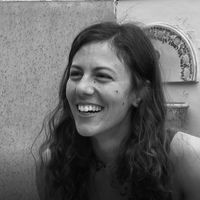

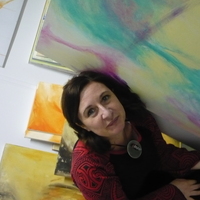

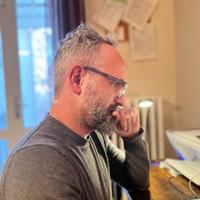

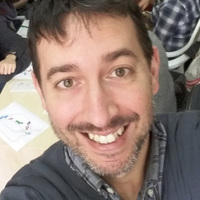
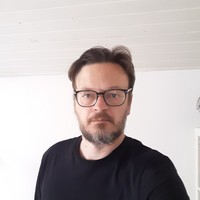


Uploads
Other by Maria Olimpia Squillaci
Link to the collection of case studies: https://doi.org/10.25573/data.c.6280911
More information on the SMiLE project website: https://folklife.si.edu/smile
Papers by Maria Olimpia Squillaci
di restanza (Teti, 2017) in un Aspromonte sempre più
abbandonato.
CONFERENCE PRESENTATIONS by Maria Olimpia Squillaci
Link to the collection of case studies: https://doi.org/10.25573/data.c.6280911
More information on the SMiLE project website: https://folklife.si.edu/smile
di restanza (Teti, 2017) in un Aspromonte sempre più
abbandonato.